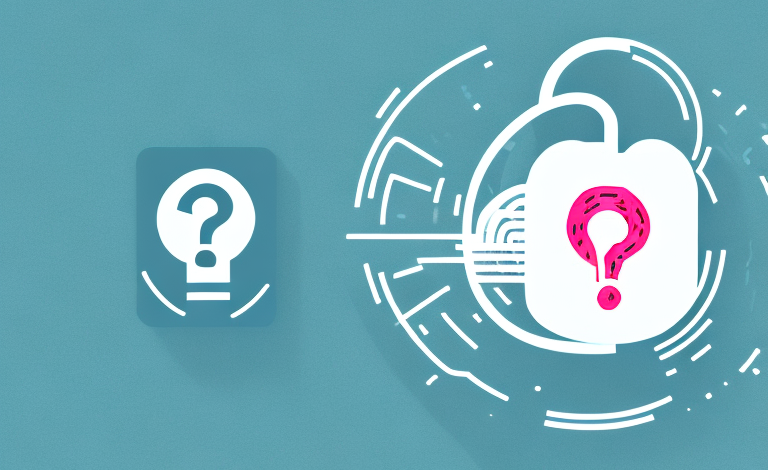The advancement of technology has brought about the need for robust security mechanisms to safeguard sensitive information. Biometric security is one such mechanism that has gained popularity over the years. Biometrics involves the measurement and analysis of physiological or behavioral characteristics, such as fingerprints, facial recognition, and iris scans, to verify an individual’s identity. Although biometric security is a reliable form of authentication, it is not entirely foolproof. In this article, we will explore why it is challenging to defeat and bypass biometric security.
Understanding the basics of biometric security
Biometric authentication uses an individual’s unique biological or behavioral characteristics to verify their identity. These characteristics cannot be easily duplicated or stolen, making biometric security a reliable mechanism for access control. Biometric systems aim to match the individual’s biometric data with the template stored in the system’s database to authenticate the identity.
There are several types of biometric authentication methods, including fingerprint recognition, facial recognition, iris recognition, voice recognition, and even DNA recognition. Each method has its own advantages and disadvantages, and the choice of method depends on the specific use case and security requirements.
While biometric security is generally considered more secure than traditional authentication methods such as passwords or PINs, it is not foolproof. Biometric data can be stolen or replicated, and there have been instances of biometric data breaches in the past. Therefore, it is important to implement additional security measures such as encryption and multi-factor authentication to enhance the overall security of the system.
Different types of biometric authentication methods
There are several biometric authentication methods available in the market, including fingerprints, voice recognition, iris scans, and facial recognition. Each biometric method has its strengths and weaknesses. For instance, facial recognition is ideal for access control in public places, while iris scans are more suitable for high-security systems such as banks and government institutions.
Another biometric authentication method that is gaining popularity is palm recognition. This method uses the unique patterns and lines on a person’s palm to verify their identity. It is often used in healthcare settings to ensure that only authorized personnel have access to patient records and medication.
Retina scans are another high-security biometric authentication method that uses the unique patterns of blood vessels in the retina to verify a person’s identity. This method is often used in military and government settings where the highest level of security is required.
Advantages and disadvantages of biometric security
Biometric security offers numerous advantages, including accurate identification and authentication, quick processing times, and the ability to eliminate fraudulent activities. However, biometric security does have some disadvantages. For instance, the accuracy of biometric systems can be affected by environmental factors such as lighting and noise, and the cost of installing and maintaining biometric systems can be high.
Another disadvantage of biometric security is the potential for privacy concerns. Biometric data, such as fingerprints or facial recognition, is unique to each individual and can be sensitive information. If this data is not properly secured, it can be vulnerable to hacking or misuse. Additionally, some individuals may feel uncomfortable with the collection and storage of their biometric data, leading to potential legal and ethical issues.
Common biometric security threats
The most common threat facing biometric security is identity theft. Threat actors may use biometric data to steal an individual’s identity or gain unauthorized access to sensitive information. Additionally, biometric systems can be compromised through hacking or malware attacks.
Another potential threat to biometric security is the possibility of false positives or false negatives. False positives occur when the system incorrectly identifies someone as an authorized user, while false negatives occur when the system fails to recognize an authorized user. This can be caused by factors such as changes in physical appearance, environmental conditions, or technical issues with the system itself. It is important for biometric systems to have a low error rate to minimize the risk of false positives or negatives.
Methods used to bypass biometric security
Despite the advanced measures employed in biometric security, threat actors have devised ways of bypassing them. These methods include the use of fake biometric data, hacking into the system’s database, and physical coercion.
Another method used to bypass biometric security is the manipulation of the biometric sensor itself. This can be done by using materials such as gelatin or silicone to create a fake fingerprint or facial feature that can fool the sensor. Additionally, some threat actors have been known to use high-resolution photographs or videos of the authorized user to trick the system into granting access. It is important for organizations to stay vigilant and continuously update their biometric security measures to stay ahead of these evolving threats.
Analyzing the vulnerabilities of different biometric systems
Each biometric system has its unique set of vulnerabilities. For example, facial recognition systems can be fooled by using a 3D printed mask or a photograph of the actual person. Similarly, fingerprints and iris scans can be duplicated using high-quality digital images.
Another vulnerability of biometric systems is the possibility of data breaches. Biometric data, such as fingerprints and facial recognition patterns, are stored in databases that can be hacked. Once the data is stolen, it can be used to impersonate the individual and gain access to secure areas or sensitive information.
Furthermore, biometric systems can also be subject to physical attacks. For instance, an attacker can physically damage the biometric sensor or tamper with the software to manipulate the system’s output. This can result in false positives or negatives, which can compromise the security of the system.
Biometric spoofing: How it works and how to prevent it
Biometric spoofing is the process of creating artificial biometric identifiers to bypass biometric security. Biometric spoofing can be prevented by implementing multi-factor authentication methods, including the use of passwords, tokens, and other forms of identification.
One common method of biometric spoofing is through the use of deepfakes, which are realistic images or videos created using artificial intelligence. These deepfakes can be used to fool facial recognition systems, voice recognition systems, and even fingerprint scanners. To prevent biometric spoofing through deepfakes, it is important to use liveness detection methods, which can detect whether the biometric identifier is coming from a live person or a fake image or video.
The role of artificial intelligence in enhancing biometric security
Artificial intelligence has been instrumental in enhancing biometric security. AI algorithms can be used to detect fraudulent activities and refine biometric identification processes, improving their accuracy and reliability. AI-powered biometric systems can also identify and analyze new threats, reducing system vulnerabilities.
One of the key advantages of using AI in biometric security is its ability to learn and adapt. AI algorithms can analyze large amounts of data and identify patterns that may not be visible to human analysts. This allows for more accurate and efficient identification of potential security threats.
Another area where AI is making a significant impact is in the development of new biometric technologies. For example, researchers are exploring the use of AI to develop biometric systems that can identify individuals based on their unique gait or behavioral patterns. These systems have the potential to be more secure and reliable than traditional biometric systems, which can be vulnerable to spoofing and other types of attacks.
The future of biometric security: Challenges and opportunities
Biometric security is poised to become the future of access control due to its reliability and convenience. However, the increased reliance on biometric data also comes with its set of challenges, including privacy concerns and the need for sophisticated security measures. Biometric technology is rapidly evolving, with new forms of authentication and better identification techniques expected to emerge soon.
In conclusion, biometric security is a reliable form of authentication, but it is not entirely foolproof. Biometric security threats, vulnerabilities, and spoofing attempts continue to grow, highlighting the need for robust multi-factor authentication methods. By understanding the basics of biometric security and analyzing its weaknesses, stakeholders can take deliberate steps towards enhancing the security of their systems.
One of the biggest challenges facing biometric security is the issue of data privacy. Biometric data is highly personal and sensitive, and its misuse can have severe consequences. As such, there is a need for strict regulations and guidelines to govern the collection, storage, and use of biometric data. Additionally, there is a need for transparency and accountability in the handling of biometric data to ensure that it is not misused or abused.
Another opportunity for biometric security lies in its potential to revolutionize the healthcare industry. Biometric technology can be used to securely store and share patient data, enabling healthcare providers to access critical information quickly and efficiently. Biometric authentication can also be used to ensure that only authorized personnel have access to patient data, enhancing patient privacy and security. As the healthcare industry continues to embrace digital transformation, biometric security is poised to play a significant role in ensuring the safety and security of patient data.



